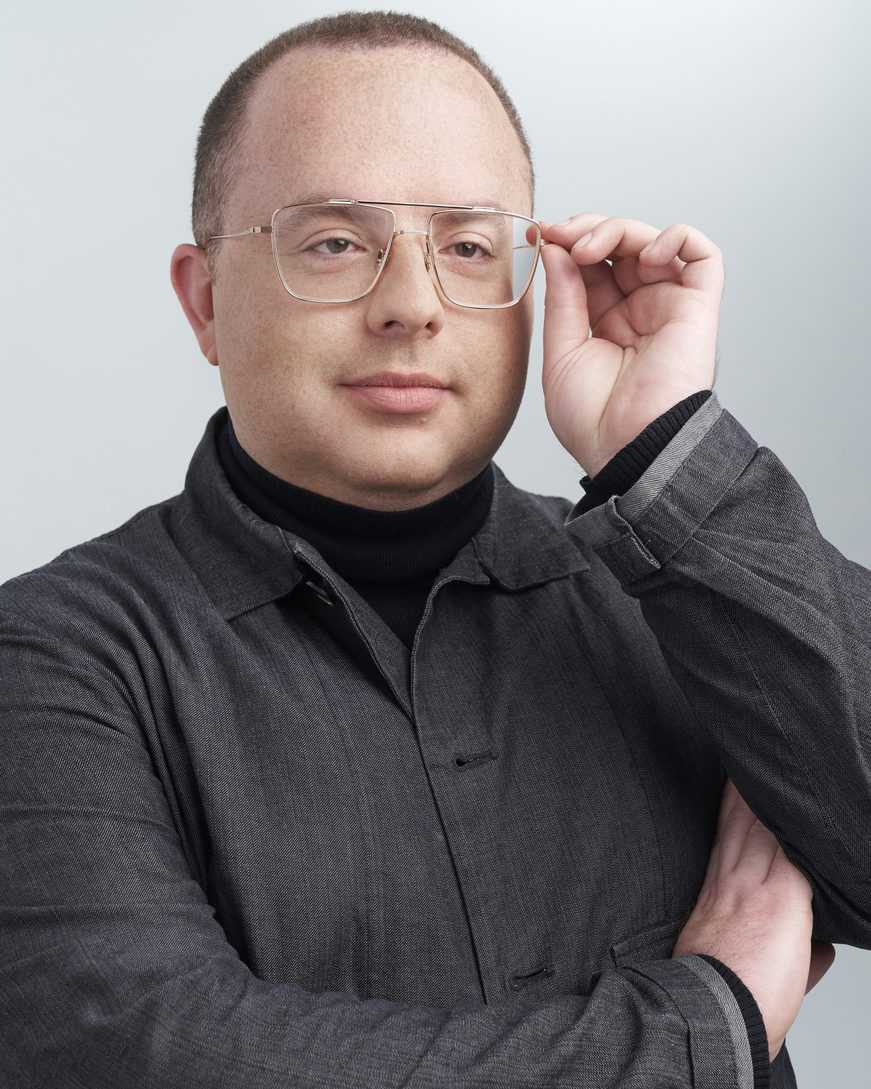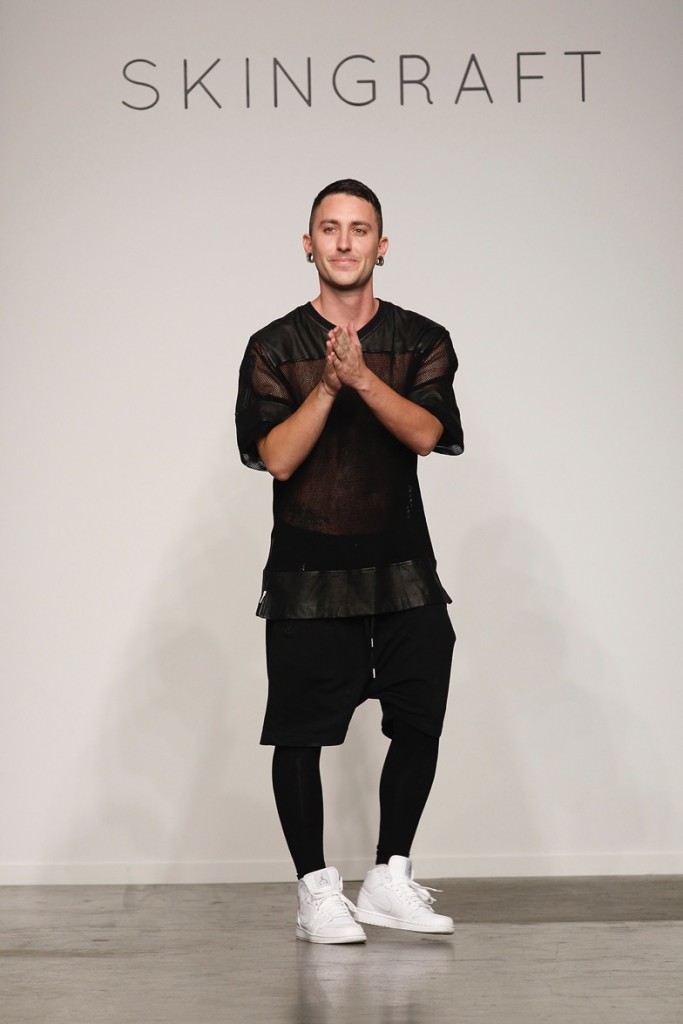SKINGRAFT’S JONNY COTA BRINGS WARMTH AND ACCESSIBILITY TO STREETWEAR


Founded in 2006, on the basis of creating intricate, ornate, lean-to-the-left pieces, Skingraft has still managed to remain accessible to a wide audience. The brand has taken a different approach to ready-to-wear clothing by combining both conceptual and comfort elements into its designs. With this framework, Skingraft is now a key player in the ready-to-wear men’s and women’s contemporary market.
MR recently caught up with Skingraft founder and designer Jonny Cota for an intimate take on his views on androgyny, the growth of Skingraft’s customer and the importance of having a brick-and-mortar location.
Q: Who do you see as the core Skingraft customer?
A: When we started, I saw the core Skingraft customer as a very specific downtown artist type that really likes to express themselves through alternative fashion. As we progress as a brand, my scope for our target customer has really widened. I think that it’s even more inspiring to be aiming for the downtown kids that want to wear cool black leather all the way to the older customer who is experimenting or having fun with some of our more fluid pieces, and that’s cool to me. If we can target both of those audiences we’ve accomplished a really cool thing.
Q: What’s working well for the brand?
A: Leather. It has always been our strong point. I love leather. But, I’m ready to evolve past leather. So, I’m hoping, if this conversation happens again in one year, I’ll say our denim collection that we just launched and our wide range of basics. We’re also doing trainers next season. So, every season we’re trying to open a new category. But, what’s doing well for us right now is our iconic leather pieces.
Q: What is your wholesale distribution like now?
A: We sell about 30 stores internationally, mainly independent boutiques. We have our own store in LA and we just had a pop-up in San Francisco for two months So going forward we are striving to grow our model to be direct-to-consumer as the brand grows. Wholesale is super important for us in order to grow the brand, but the experience we can offer direct-to-customer, whether it’s through the web site or through our brick-and-mortar shops is so much more unique and we can really share our whole brand story. Once we got a taste of it by opening our own store, which is rare for a brand our age, it’s hard to not be really driven by the stores.
I always compare it to when I was a teenager when I hung all of my posters all over my room. I had everything from Marilyn Manson to a guy I thought was attractive, since I was closeted. Like all of these different things. Everything was on those walls and if you walked in you would be like, “oh, okay, I see what this kid is into.” The store is kind of like that ,where even though our store in LA is super minimal and very brutal and cement, you walk in and you’re like, “I get it.” The smell, the sound, the way it’s laid out, I think it’s a cool opportunity for the customer to get that experience.
[metaslider id=100462]
Q: Do you have one key wholesale partner that you do a lot of business with?
A: In New York actually one of our longest standing accounts is called Shop Untitled near NYU on 8th street. They’ve been a in business for about 25 years, they’ve been selling us for about seven years.
Q: How important is social media to you and the brand?
A: Obviously you can’t exist these days unless if you’re participating in social media. I think that we try to connect social media to something physical, which is easier said than done. We’ll do social media campaigns that bring it to a party that we’re throwing in Paris or something like that, or we’ll be in New York for a few nights and we’ll do some little event. So it’s something where you can follow along and participate in the online conversation as people do. But we try to have these moments where we can touch and feel. That’s our approach to social media, trying to find ways to connect it to something physical so it’s not just that digital experience.
I don’t know if we do this intentionally, but we also show the “not cute” side of it all. Sometimes I’m covered in mosquitoes in Bali in our studio all sweaty and gross after a shoot, and that’s what’s real. Sometimes we’re showing the production process when we’re washing 1000 hides of leather and drying them everywhere and everyone just looks disgusting that day, and that’s also real. I hope that there is some realness in what we’re posting so that you can see the full scope and not just the polished product.
Q: You have a strong presence in LA, what are some of the important differences in the menswear scene between LA vs. NY?
A: When we first started the brand, everyone said, “ You’re not very LA, this stuff doesn’t look very LA, it feels more New York or maybe Asia.” Also, I didn’t have much pride about LA because we wanted to be able to compete in the international conversation about menswear and womenswear as well. But, over the years there is something very LA about us. There’s a casualness sometimes, there’s a relaxed silhouette, there’s a comfort to us. But also there is a lack of conservative old world tailoring – that’s not something you would see in a Skingraft collection. We’re always relaxed, which is very Los Angeles.
I think New York definitely appreciates beautiful tailored items, a nod to something old, even if it’s progressive. We love New York, we had a store here for two years, but I think that the core of Skingraft is very LA.
[metaslider id=100475]
Q: The brand has a lot of unisex pieces. Where does Skingraft fit in the realm of androgynous clothing?
A: We’ve always played with a lot of androgyny and gender fluidity in our presentations and some of the film pieces that we have done because I think it’s a really beautiful, rarely explored part of our beings. We are starting to see it a lot more now, but I think that a lot of our friends and the people that have helped create the tribe that is Skingraft are definitely a part of that world. For me, it’s a very beautiful version of a human. Whether it’s a style with how you’re wearing it, or if you are an actual trans person, I think that really appreciating both worlds of the masculine and feminine at the same time is a very evolved version style, humanity and spirit.
Q: What are three things you can’t live without?
A: A glass of red wine at the end of the day. My Bose Bluetooth speaker that goes everywhere with me. These sound so shallow… and my yellow legal pad! I sketch like a third grader and I doodle it all on my yellow legal pad. I’ve always been that way.
Q: If you had to pick one thing, what item should every guy add to his fall wardrobe?
A: Statement sunglasses. I was just shopping for them 10 minutes ago; I rushed back here to meet you. People have always had accessories to save their outfit, like you can have a great pair of shoes, and dress like a bum, and look great. I was noticing on the streets people wearing really gorgeous pairs of sunglasses, that look really premium, and they’re in gym clothes but you can read past it. It really stands out.
I’ve also noticed in the menswear market that people are taking more chances in their footwear recently. Some of the trainers that are coming out are like alien shoes and you see people buying into them who you might not expect to take those chances. I’ve started to slowly see that happen and I hope that it happens faster with eyewear.
Q: What’s next for the brand?
A: We’re at a great crossroads right now. We are reimaging the collection for the future of the brand and expanding upon it. So, what’s next, and I know it’s super boring – I wish it was that I was running for president with Kanye—but it’s opening up more categories within our collection and really expanding the vision that is Skingraft. It started out very, very narrow with leather jackets, and now every season we’re slowly increasing our categories. With every category you take on, you put yourself out there more with a greater opportunity to succeed or fail. It’s just now that the vision is being fully realized and I’m ready to go there with the brand.


